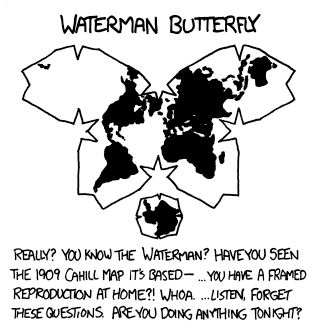I have a clear globe that i would like to project to a flat map. Any common projection should work, since computer programs exist for converting map projections. Where should i start?
A couple of details: First, my “globe” is an empty plastic Christmas tree ornament, so it can be hung from a string at one end but it doesn’t have a stand like a normal globe does.
Second, this is a worldbuilding thing. My globe does not represent any real planet or similar body, which is why i need to make a new map from the globe instead of finding an existing one.
EDIT: To be clear, i know about projections already. I’m not worried about picking a projection. What i’m asking about is the process is for taking a physical globe and projecting that globe’s surface onto a flat rectangle. I don’t know how to turn an imaginary cylinder or cone sitting on my globe into a tangible physical or digital map. I don’t have the means to cut up and unfold my globe until it’s flat. What is the actual process for making a map from a globe, for any projection? I know this isn’t how maps are traditionally made, but surely there must be a good way to do this.


For some definition of “least”.
Using their own scoring system for distortion, a globe would be a 0, a Mercator projection would be 8.296, Winkel Tripel is a 4.563, and their projection would be a 0.881.
That’s interesting, though their own map benefits from their definition of B (the number of boundary cuts an arbitrary line segment needs to cross), because this metric does not take into account how far away the elements on the map are from each other. E.g. the cuts going from northern to southern Africa count as much as a “distortion” as the ones separating Indonesia and South America.
Ultimately, “objective” best depends on the metric you choose and that is a subjective decision.
Agreed, this map isn’t particularly usable to the average person.
Well, gee, thanks for the rabbit hole!